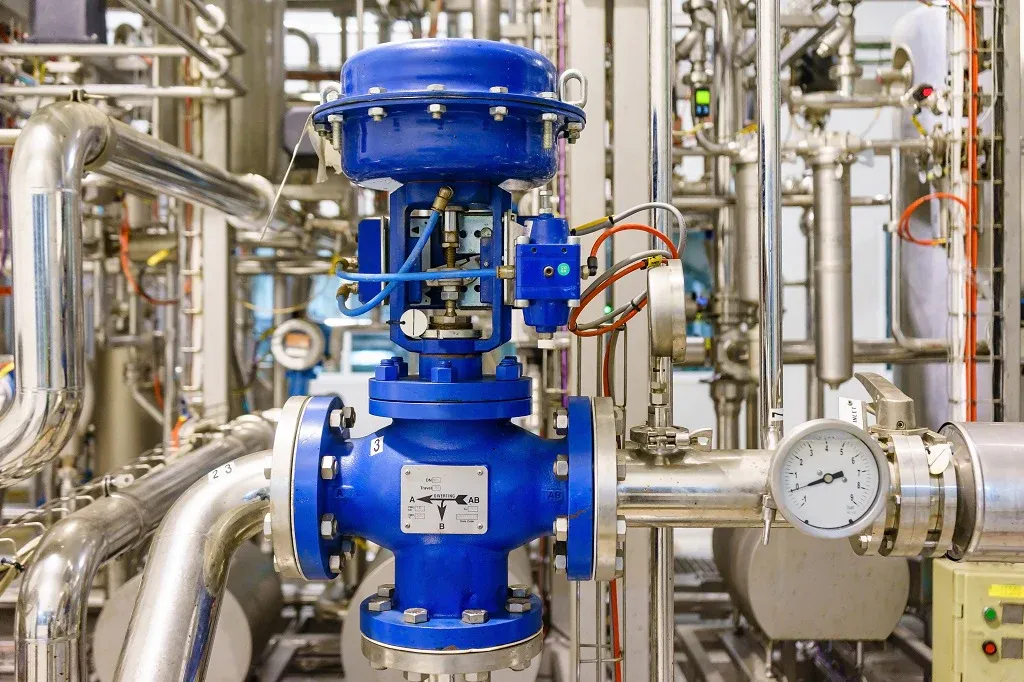Control valves are an indispensable part of industrial processes, playing a pivotal role in regulating the flow of fluids such as gases, oils, water, and steam. As the most commonly used final control element in industries, control valves ensure the proper functioning of various control loops. This article delves into the fundamentals of control valves, their types and applications, common faults, and effective solutions.
A control valve is a power-operated device used to regulate or manipulate the flow of fluids within a system. As a critical component of control loops, it adjusts fluid flow to maintain desired process conditions such as pressure, temperature, or level.

Control valves are categorized into two primary classes based on their motion:
These include globe valves and diaphragm valves, ideal for precise control.
Ball valves, butterfly valves, and plug valves fall into this category, offering quicker response and minimal pressure drop.
Control valves are vital across industries to regulate process variables like pressure, flow, level, and temperature. Here’s how they contribute to different applications:
Valves regulate fluid flow to achieve desired pressure, as seen in systems like steam sterilizers or air compressors.
They adjust the flow of water, gas, or other fluids in processes, such as feeding water to boilers or directing compressed air in pneumatic systems.
Valves manage fluid levels in tanks or vessels, ensuring precise filling, such as in bottling and packaging applications.
In systems like steam autoclaves, valves regulate temperature by controlling fluid flow and pressure.
Despite their importance, control valves can face issues that disrupt operations. Below are some common faults and effective solutions to address them.
Problem: Media containing particles or solids can clog the throttle port and guide components of a control valve.
Solution: Install an external flushing system with gas or steam at the valve's lower part. When clogging occurs, the flushing system clears blockages without dismantling the valve, restoring normal operation.
Problem: Small-diameter or ultra-small flow control valves are prone to blockage due to impurities in the medium.
Solution: Add a filter to the pipeline before the valve to ensure smooth fluid passage. For valves with positioners, install air filtration and pressure-reducing valves on the air supply line to prevent air throttle port blockages.
Problem: During initial commissioning or post-overhaul, impurities like welding slag or rust can accumulate, leading to clogging or damage to sealing surfaces.
Solution:
Disassemble and clean the valve, removing impurities.
Inspect and grind the sealing surface if damaged.
Open the bottom plug to flush out debris from the lower bonnet.
Flush the connected pipelines to prevent recurrence.
Problem: Straight-through control valves, due to their complex flow paths, can cause media deposition and blockages.
Solution: Replace straight-through valves with angle valves. Angle valves have superior fluid dynamics, better scouring performance, and smaller dead zones, reducing the chances of clogging.
Problem: Solid particles or impurities like rust and slag block small throttle gaps.
Solution: Use control valves with larger throttle gaps, such as:
Concentrate the throttling area for easier troubleshooting.
Replace plunger-shaped spools to minimize clogging risks.
Example: A chemical plant resolved frequent sticking issues by replacing double-seated valves with sleeve valves.
Problem: Oversized or undersized valves lead to improper flow regulation, causing inefficiencies.
Solution:
Conduct accurate sizing of the valve body and port based on system flow requirements.
Use specialized software or consult with valve manufacturers for proper selection.
Problem: Leakage, whether internal (through the valve seat) or external (through the valve body), results in fluid loss and operational inefficiencies.
Solution:
Inspect valve seats, seals, and gaskets for wear or damage.
Use high-quality materials for sealing components.
Conduct regular maintenance to identify and resolve leakage issues early.
Control valves are indispensable in ensuring efficient and reliable industrial processes. However, common issues like clogging, leakage, and mismatches in sizing can hinder their performance. Employing preventive measures like external flushing, pipeline filters, regular cleaning, and proper sizing can significantly enhance their reliability.
By understanding the root causes of valve faults and adopting these solutions, industries can ensure seamless operation and prolong the lifespan of their control valves. As technology advances, continued innovation in control valve design and maintenance practices will further optimize their performance in diverse applications.
